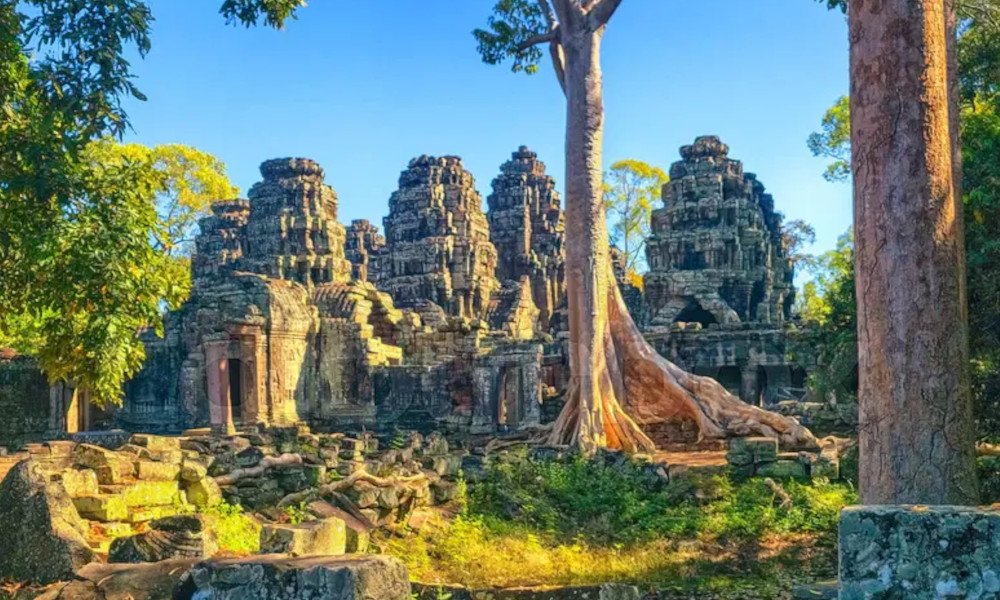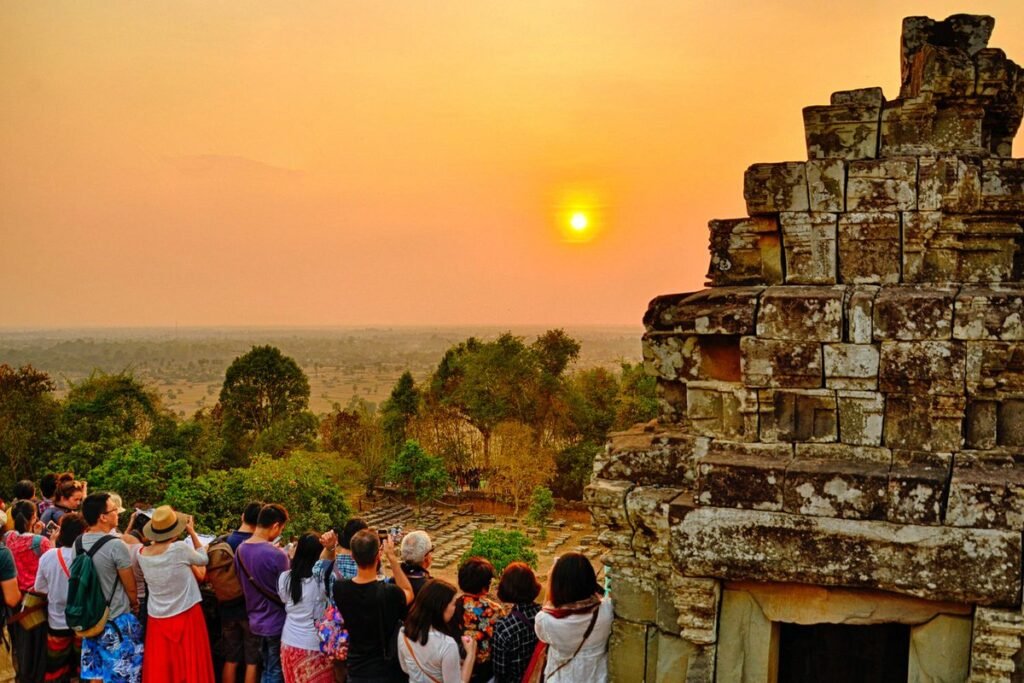Banteay Kdei Temple

Banteay Kdei stands in sharp contrast to the frequently crowded and renowned Angkorian ruins, offering a serene and tranquil atmosphere. The name translates to “Citadel of Chambers,” which aptly describes the intricate labyrinth of chambers that invite exploration. Functioning as a Buddhist temple, these ruins have served as an active monastery during various periods since their establishment in the 12th century, continuing until the 1960s.
In the present day, the ruins are enveloped in vegetation and appear to be overlooked by the thriving Angkor tourism sector. This seclusion and enigmatic quality render it a hidden treasure for those seeking to explore the area. Towering trees provide shade over the Buddhist bas-reliefs, allowing visitors to spend countless hours wandering through its winding pathways.
Discover Angkor Wat and many more temple in siem reap with stunning sunset view point
History and Architecture
Banteay Kdei was constructed during the late 12th and early 13th centuries under the rule of Jayavarman VII. This temple exhibits an architectural style akin to that of Bayon, Ta Prohm, and Preah Khan, although it is relatively smaller in scale compared to other temples in Angkor.
The temple’s design features three enclosures surrounded by an outer compound wall. The inner enclosure is flanked by galleries that extend along its axis, leading to the main temple structure. Unfortunately, the temple was built using a lower-quality of sandstone, and the construction techniques employed were not as advanced as those used in other Angkor temples. The current state of deterioration serves as a testament to this. Nevertheless, restoration efforts are underway to revive much of the temple’s original condition.
Notably, the temple’s gates are embellished with face towers, known as gopuras, similar to those found at the five gates of Angkor Thom. Historians widely agree that these face towers are emblematic of Jayavarman VII, symbolizing both his persona and the deity Lokesvara, also referred to as Avalokiteshvara.
Another intriguing parallel between Banteay Kdei and Ta Prohm is the hall of dancers situated just before the entrance on the eastern side of the temple. This hall is adorned with bas-reliefs of apsara dancers and features a seated Buddha who oversees the corridor.
In the courtyard, one can observe the historic and captivating devatas by looking up at the towers. These designs are notably better preserved in comparison to the surrounding ruins.
Location and How to Get There
Banteay Kdei is situated within the Angkor Archaeological Park, necessitating a temple pass for entry. It is also included in the small circuit, a 17-kilometer loop that encompasses all the essential temples within Angkor Park.
Positioned directly across from Srah Srang, an ancient man-made reservoir often referred to as the “royal bathing pool,” Banteay Kdei is approximately 10.5 kilometers (or about 6 miles) from Siem Reap. The journey takes around 15 minutes by tuk-tuk or roughly one hour by bicycle.
For visiting Banteay Kdei, tuk-tuks or bicycles are the most suitable modes of transportation. The small circuit is entirely flat, making it quite manageable to explore by bicycle from the center of Siem Reap.
Why You Should Visit Banteay Kdei
The absence of large crowds is notably invigorating. Experiencing solitude within an ancient temple fosters a profoundly spiritual atmosphere, especially when contrasted with the discomfort of navigating through throngs of photographers.
For those in search of an ideal spot to witness the sunrise, Banteay Kdei, along with its adjacent site Srah Srang, stands out as a remarkable option. The entrance to the temple is particularly memorable, as a Buddhist monk or nun oversees a modest shrine situated nearby. While blessings and donations are not anticipated, visitors should not feel compelled to engage with the monk or nun if they prefer not to. Banteay Kdei offers numerous photographic opportunities, featuring a maze of overgrown corridors and courtyards.
To maximize your experience in Angkor Park, it is advisable to start with a sunrise visit to Banteay Kdei and then explore the more frequented main temples later in the day, once the crowds have diminished.
If you encounter an exceptionally loud chirping sound, it is not an automobile alarm. This noise originates from a cicada species renowned for its volume, which can render the jungle surrounding Banteay Kdei almost overwhelming at times. Additionally, in the dimly lit corners of the temple, one can find rare arachnids, whose vibrant bodies provide excellent photographic subjects.

